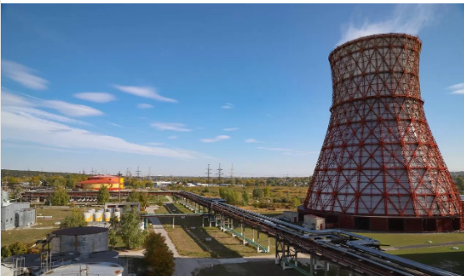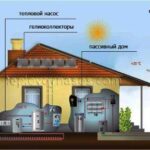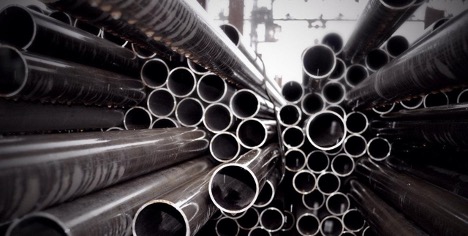Useful supply of thermal energy: what is it, how to calculate, formula
Thermal energy is one of the main resources in the modern economy. An important aspect in its use is the concept of useful supply of thermal energy, which reflects the efficiency of its delivery from source to consumer.

Measuring the effective supply of thermal energy plays a key role in the optimization and control of energy systems. This process is important not only to accurately understand actual energy consumption, but also to identify areas where energy efficiency can be improved and operating costs can be reduced. It also helps ensure more efficient use of energy resources, which is critical as energy consumption increases and the need to reduce environmental impact occurs.
The content of the article
Definition and meaning of useful supply of thermal energy
The net supply of thermal energy is a key indicator in the field of energy, which determines the amount of thermal energy actually used at the final stages of its consumption. This indicator differs from the total amount of energy produced because it takes into account energy losses during its transfer from source to consumer, as well as losses when energy is converted from one form to another. Thus, useful supply is a measure of the actual efficiency of the power system and its ability to meet the needs of consumers.
Measuring the net supply of thermal energy is important for understanding and assessing the efficiency of the power system. This indicator allows us to assess how efficiently energy resources are used and is key for planning and modernizing energy infrastructure. Understanding the level of losses in the energy transmission and conversion process allows engineers and planners to make informed decisions about the implementation of technologies to improve efficiency and reduce energy consumption.
Analysis of useful supply contributes to the development of measures to improve energy efficiency. This includes improving the insulation of heating networks, optimizing equipment operation and integrating renewable energy sources. It also helps in determining the economic feasibility of investing in energy-saving technologies and developing strategies to reduce energy consumption. Ultimately, improving thermal energy efficiency not only saves resources, but also reduces environmental impact, which is a key aspect of sustainable development.
Calculation of useful leave
It has long been established that calculating the useful supply of thermal energy involves analyzing various factors affecting energy losses. These calculations help assess the actual efficiency of energy systems.
The formula for calculating useful leave is as follows:
Pclimbed = Pgenerally - Plosses
Where:
- Pclimbed - useful supply of thermal energy,
- Pgenerally - the total amount of energy generated,
- Plosses — energy losses during transmission and conversion.
This formula gives an idea of the actual amount of energy available for use after all technological processes.
Components of losses in thermal energy:
- transmission losses that occur during the transport of energy from source to consumer, often due to friction or leakage;
- Conversion losses that occur when energy is converted from one form to another, such as when generating electricity from thermal energy.
Practical application of useful supply calculations:
- Helps improve efficiency and reduce operating costs.
- Necessary for accurately determining the amount of energy required.
- A key element for cost-benefit analysis of energy projects.
Impact on ecology and sustainable development
Effective management of the useful supply of thermal energy has a significant impact on the environment and sustainable development. Optimizing energy supply processes not only helps reduce resource consumption, but also reduces harmful emissions into the atmosphere. This is especially relevant in the context of global efforts to combat climate change, where reducing emissions of carbon dioxide and other greenhouse gases is a key priority.
Minimizing losses during the transmission and conversion of thermal energy directly affects the efficiency of energy systems. When losses are reduced, this reduces the need for additional energy production, which in turn reduces the environmental footprint of energy companies. This is especially important for countries seeking to transition to renewable energy sources, as efficient energy distribution reduces dependence on traditional fossil fuels.
At the sustainable development level, improving thermal energy efficiency contributes to achieving the sustainable development goals set by the United Nations.This includes improving air quality, ensuring access to affordable, reliable and modern energy for all, and promoting clean and environmentally friendly technologies and production processes. Therefore, improving thermal energy efficiency is a key factor in moving towards a more sustainable and environmentally responsible future.
Conclusion
Net heat output is not just a technical indicator, it is an important tool for assessing and improving energy efficiency. Understanding this concept helps in optimizing energy systems, reducing operating costs and reducing environmental impact. In the modern world, where energy plays a key role in the economy and ecology, understanding and correct calculation of the useful supply of thermal energy becomes especially relevant.
Accurate measurement of net output is also necessary to ensure compliance with regulatory requirements and energy standards. This helps companies and organizations not only comply with legal frameworks, but also strive for sustainability and environmental responsibility. Measures such as improving the insulation of thermal systems, optimizing equipment operation and integrating renewable energy sources become the basis for improving the overall efficiency of the power system.
In the long term, improving thermal energy efficiency contributes to achieving global sustainable development goals. This includes reducing greenhouse gas emissions, increasing energy efficiency and transitioning to a low-carbon economy.Effective management of net energy output therefore becomes a key factor not only in ensuring energy security, but also in moving towards a more sustainable and environmentally balanced future.





